#Academy Award for Best Visual Effects
Explore tagged Tumblr posts
Text

Rogue One: A Star Wars Story (2016, Gareth Edwards)
01/02/2025
#rogue one: a star wars story#rogue one#film#2016#gareth edwards#science fiction film#Scriptment#John Knoll#Gary Whitta#chris weitz#tony gilroy#star wars#rebel alliance#galactic empire#death star#felicity jones#jyn erso#diego luna#ben mendelsohn#donnie yen#mads mikkelsen#alan tudyk#riz ahmed#jimmy smits#james earl jones#jiang wen#forest whitaker#89th Academy Awards#Academy Award for Best Sound#Academy Award for Best Visual Effects
27 notes
·
View notes
Text

Oscar nominations have been announced and Kingdom Of The Planet Of The Apes is up for best visual effects! The competition is Alien: Romulus, Dune: Part Two, Better Man, and Wicked.
The Caesar trilogy of Rise, Dawn, and War all received nominations but did not win the award (the winners were Hugo, Interstellar, and Blade Runner 2049 respectively). Can Kingdom break the cycle and be the first POTA movie to win an Academy Award?
#kingdom of the planet of the apes#academy awards#oscars#planet of the apes#pota#rise of the planet of the apes#dawn of the planet of the apes#war for the planet of the apes#war of the planet of the apes#reboot pota#wicked#dune#better man#alien#mine#best visual effects#better man film#better man movie
23 notes
·
View notes
Text
Dune part 2 again
4 notes
·
View notes
Text
Why "Oppenheimer" Might Win an Oscar
In the ever-evolving landscape of cinema, certain films emerge with the promise of leaving an indelible mark on the hearts and minds of audiences and critics alike. “Oppenheimer,” directed by the acclaimed Christopher Nolan, is one such film that has sparked widespread Oscar buzz. With a compelling narrative, stellar performances, and groundbreaking technical achievements, “Oppenheimer” is poised…
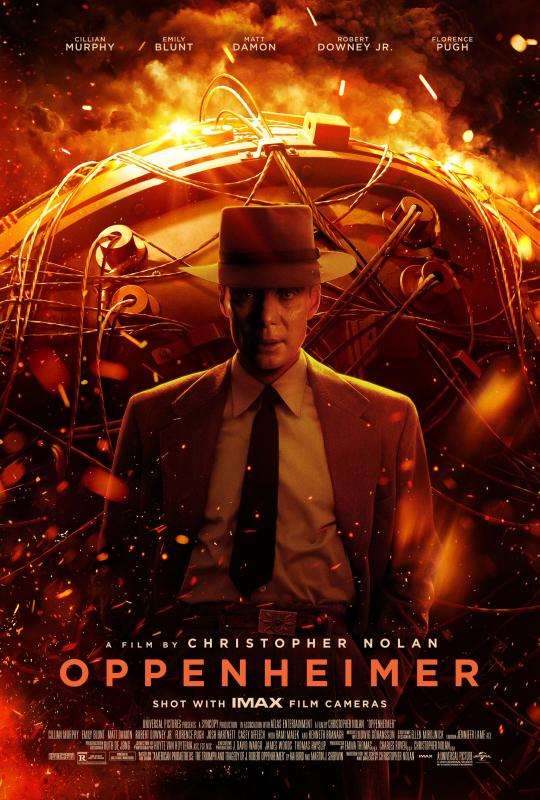
View On WordPress
#Academy Awards Best Picture Nominees#Atomic Bomb Film#Best Director Christopher Nolan#Christopher Nolan 2024 Oscars#Cillian Murphy Best Actor Nomination#Cinematography in Oppenheimer#Historical Films Academy Awards#J. Robert Oppenheimer Biopic#Moral Dilemmas in Cinema#Oppenheimer Film Analysis#Oppenheimer Movie Review#Oppenheimer Oscar Buzz#Oscar Nominated Films 2024#Science and Ethics in Film#Visual Effects Oscars
1 note
·
View note
Text
Oscar Buzz Builds as Academy Announces Shortlists in 10 Categories for 96th Awards
Discover the 2024 Oscar shortlists for the 96th Academy Awards! Our preview covers top contenders, surprising snubs, and insights across 10 categories. Stay updated with the latest in the Oscar race. #Oscars2024 #AcademyAwards #FilmIndustry #OscarBuzz
Top left: ‘Barbie;’ Bottom left, ‘Killers of the Flower Moon;’ Top right, ‘Rebel Moon; Bottom right ‘Oppenheimer’ In a striking convergence of cinematic celebration and seasonal change, the Academy of Motion Picture Arts and Sciences today unveiled the shortlists in 10 categories for the upcoming 96th Academy Awards. This announcement, marking a pivotal moment in the Oscar race, sees a diverse…

View On WordPress
0 notes
Text
Awards for your DR!
including singers/idols and actors/actresses ᝰ.ᐟ

― Singers & idols ⭑.ᐟ
#001 ~ BILLBOARD MUSIC !! ~ Top Artist ~ Top New Artist ~ Top Female/Male Artist ~ Top Duo/Group ~ Top K-Pop Album ~ Top Global K-Pop Artist ~ Most Sold Album ~ Most popular K-Pop touring artist ~ Top Album/Artist on Billboard 200 ~ Top Album/Artist on Bilboard 100 ~ Top Soundtrack ~ Icon Award ~ Artist of the decade
#002 ~ MTV VMA's !! ~ Video/MV of the year ~ Artist of the Year ~ Song of the Year ~ Best New Artist ~ Best Group ~ Best Colab ~ Best Pop ~ Best K-Pop ~ Best Choreography ~ Song of the Summer ~ Best Trending Video
#003 ~ GRAMMYS !! ~ Record of the Year ~ Album of the Year ~ Song of the Year ~ Best New Artist ~ Producer of the Year ~ Composer of the Year ~ Best Pop Solo Performance ~ Best Pop Duo/Group Performance ~ Best Pop Album ~ Legend Award
#004 ~ AMA's !! ~ Artist of the Year ~ New Artist of the Year ~ Collaboration of the year ~ Favorite Music Video ~ Favorite Male/Female Pop Artist ~ Favorite Pop duo or Group ~ Favorite Pop Album ~ Favorite Pop Song ~ Favorite K-Pop Artist ~ Single of the Year ~ Fan's Choice Award
#005 ~ Guinness Records !! ~Most played artist on Spotity (24 hours) ~Most played song on Spotify (24 hours) ~Fastest song to reach 100 million streams on Spotify ~Top #1 in a single worldwide chart hit ~First Album to sell more than ... million copies worldwide ~Most watched music video in 24 hours ~Most liked video clip on YouTube ~Fastest tour to sell out ~Most Instagram followers of a group/soloist ~Most liked Instagram post of a K-Pop idol ~Fastest Instagram account to reach one million followers
― Actors/actresses ⭑.ᐟ
#001 ~ OSCARS !! ~ Best Film ~ Best Actor/Actress ~ Best Supporting Actor/Actress ~ Academy Youth Award ~ Best Director
#002 ~ BAFTA AWARDS !! ~ Best Film ~ Best Actor/Actress ~ Best Supporting Actor/Actress ~ Best Foreign Language Film ~ Best Short Film ~ Best Special Visual Effects ~ Rising Star Award ~ Best Cast
#003 ~ GOLDEN GLOBES !! ~ Best Picture - Drama ~ Best Motion Picture - Musical or Comedy ~ Best Foreign Language Film ~ Best Actor/Actress - Drama ~ Best Actor/Actress - Musical or Comedy ~ Best Supporting Actor/Actress - Drama ~ Best Supporting Actor/Actress - Musical or Comedy ~ Best Actor/Actress in a Foreign Language Comedy ~ New Star of the Year - Actor/Actress ~ Special Award - Youth Performance
#004 ~ CANNES FESTIVAL !! ~ Palme d'Or (“Golden Palm”) ~ Grand Prix (” Festival's Grand Prize ”) ~ Jury Prize ~ Best Actor Award ~ Prix Un Certain Regard (Young talents) ~ Caméra d'Or (Best first film of the Festival)
#005 ~ GUINNESS RECORDS !! ~ Actor/Actress with most Oscars won ~ Youngest Actor/Actress to win an Oscar ~ Most Oscar nominations for a single performance ~ Longest performance in one take without cuts ~ Actor/actress with the largest number of characters played in his/her career ~ Actor/actress with the most No. 1 films

#kpop shifting#reality shifting#shiftblr#shifters#shifting community#shifting diary#reality shifter#shifttok#desired self#desired reality#shifting antis dni#bts shifting#shifting realities#shifting reality
509 notes
·
View notes
Text
Akira Ifukube (Naoki Satō) - Godzilla Minus One - Godzilla Suite II 2023
Godzilla Minus One is a 2023 Japanese epic kaiju film written, directed, and with visual effects by Takashi Yamazaki. It won Best Visual Effects at the 96th Academy Awards, becoming the first non-English language film to do so. It was the first Godzilla film to be nominated for an Academy Award, as well as the first Japanese film ever to receive a nomination in the Best Visual Effects category.
The score is composed by Naoki Satō, but also contains re-recorded pieces from several Godzilla movies composed by Akira Ifukube; a three-part 10-minute "Godzilla Suite" comprising new recordings of music from classic Ifukube Godzilla scores, including the famous 1954 march, plus brief references to King Kong vs Godzilla from 1962, Mothra vs Godzilla from 1964, and Godzilla vs Destroyah from 1995. These tracks are mostly used as underscore in the major battle sequences, such as Godzilla's first attack on Tokyo, and then again during the final battle. The soundtrack won Best Original Score for a Fantasy/Science Fiction Film at the 2024 International Film Music Critics Association Awards.
"Godzilla Suite II" received a total of 85,2% yes votes!
youtube
#finished#high yes#50s#20s#soundtracks#film score#o2#o2 sweep#lo3#akira ifukube#naoki saito#instrumental
500 notes
·
View notes
Text
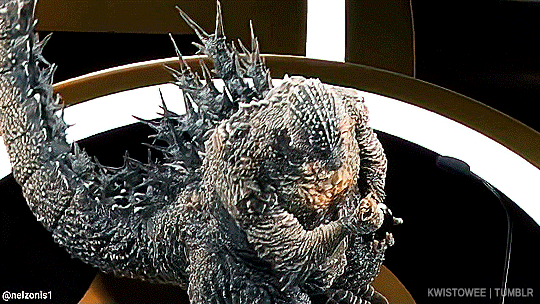
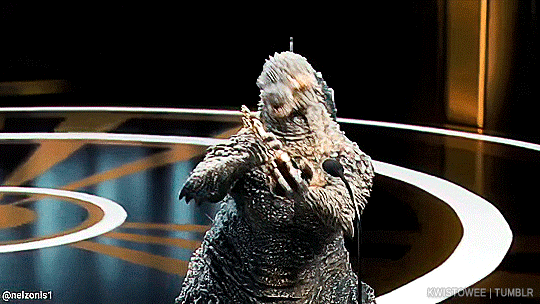
Godzilla Minus One: Best Visual Effects Winner The first Academy Award-winning film in the 70-year franchise. x
#godzilla#godzilla minus one#academy awards#oscars#gojira#godzilla minus 1#godzillaedit#userrobin#userjanis#usersavana#usersansa#cinemapix#mediagifs#userfilm#dailyflicks#filmedit#filmgifs#moviegifs#userthing#my*gifs#userbbelcher#chewieblog#usersource#they deserve everything#this is NOT my render; the creator is linked and his watermark is in the bottom left-hand corner
755 notes
·
View notes
Text
The reason "Tron" (1982) was not nominated for the Academy Award for Best Visual Effects is that it was one of the first films where the effects were done by computer, which at the time, was considered "cheating."
339 notes
·
View notes
Text

Rogue One: A Star Wars Story (2016, Gareth Edwards)
14/01/2025
#rogue one a star wars story#rogue one#film#2016#gareth edwards#science fiction film#Scriptment#John Knoll#Gary Whitta#chris weitz#tony gilroy#star wars#rebel alliance#galactic empire#death star#felicity jones#jyn erso#diego luna#ben mendelsohn#donnie yen#mads mikkelsen#alan tudyk#riz ahmed#jimmy smits#james earl jones#jiang wen#forest whitaker#89th Academy Awards#Academy Award for Best Sound#Academy Award for Best Visual Effects
12 notes
·
View notes
Text



Wicked has been nominated in 10 categories at the 97th Academy Awards:
Best Picture: Wicked, Marc Platt
Actress in a Leading Role: Cynthia Erivo
Actress in a Supporting Role: Ariana Grande
Production Design: Nathan Crowley and Lee Sandales
Film Editing: Myron Kerstein
Sound: Simon Hayes, Nancy Nugent Title, Jack Dolman, Andy Nelson and John Marquis
Visual Effects: Pablo Helman, Stephen Unterfranz, Paul Story and Rodney Burke
Original Score: John Powell and Stephen Schwartz
Make Up and Hairstyling: Frances Shannon, Laura Blount and Sarah Nuth
Costume Design: Paul Tazewell
#wicked#wicked movie#ariana grande#glinda upland#wicked the musical#dailygrande#elphaba thropp#cynthia erivo#galinda upland#gelphie#movie awards#the oscars#the academy awards
76 notes
·
View notes
Text
Red One, an action comedy about The Rock as Santa Claus' head of security going on an adventure with Chris Evans to save JK Simmons got abysmal reviews and is a box office disaster, only raking in 3 million dollars on opening day after having a budget of 250 Million Dollars

Meanwhile, Godzilla Minus One was made on a budget of less than 15 Million Dollars and is largely considered one of the best in the entire Godzilla franchise, was nominated for a ton of awards in Japan and won an Academy Award for Best Visual Effects

Japan made one of the greatest monster movies ever made in a fraction of the budget that got funneled into what looks like Disney Channel Original Movie-type content

What are we actually DOING here in Hollywood? Where on earth is all of that money going?? How are we making horrible movie after horrible movie with these bloated budgets when someone else can make a masterpiece spending barely a fraction of that kind of money??
#Godzilla Minus One#Red One#Dwayne Johnson#Chris Evans#The Rock#Santa Claus#Hollywood#Academy Awards#Godzilla#Japan#Movies
50 notes
·
View notes
Text

H.R.Giger achieved international fame with his work on Ridley Scott's Alien. In 1980, he received the Academy Award for "Best Achievement for Visual Effects" for his designs of the film's title creature and its otherworldly environment.

#art#alien#h.r. giger#film#movies#artists#cinema#design#photography#dark#horror#thriller#horrorcore#darkcore#aesthetic#dark aesthetic#dark art#u#aliens#xenomorph#academy awards
50 notes
·
View notes
Text
Kaiju Week in Review (January 21-27, 2024)
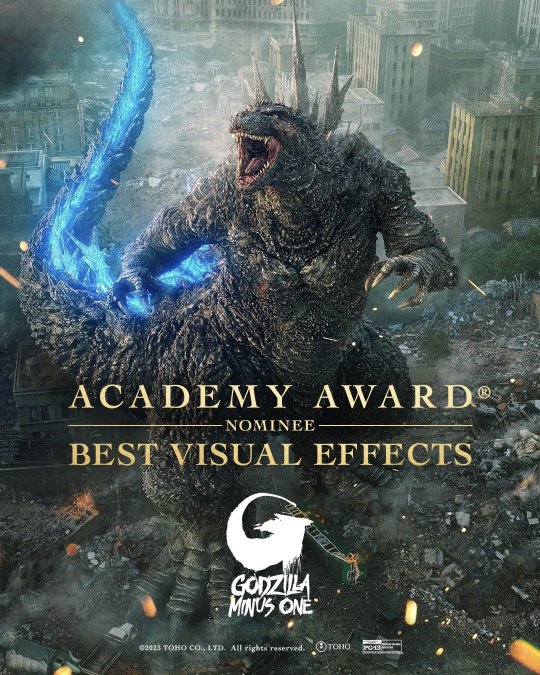
Godzilla Minus One made awards show history in both Japan and the U.S. this week. Its Oscar nomination for best Visual Effects is the first of the series (Godzilla [1998], Godzilla [2014] and Godzilla vs. Kong were previously shortlisted) and the first for any Japanese film. Small wonder Takashi Yamazaki, Kiyoko Shibuya, and their team went berserk when the nomination was announced. The other nominees are The Creator, Guardians of the Galaxy Vol. 3, Napoleon, and Mission: Impossible — Dead Reckoning Part One. According to IndieWire, The Creator has the edge, but Minus One could very well win. And while it naturally made less headlines in the Anglosphere, Minus One also picked up a whopping 12 Japan Academy Film Prize nominations, exceeding Shin Godzilla's 10.

Godzilla Minus One/Minus Color is now in North American theaters. I was intrigued enough to make it my fourth theatrical viewing of this movie, but in the end it did basically strike me as a gimmick. Godzilla Minus One was shot digitally with sets designed for color, so making it actually look like a film from the 40s was always going to be an uphill battle. Even with the regrade, there wasn’t a ton of contrast in most shots, and some of the scenes taking place at night were quite hard to see. Still, apart from the Odo Island massacre, I found the Godzilla scenes as gripping as ever.
Thanks to Minus Color, Minus One made $2.6 million this weekend, crawling back into the box office top 10. Its total in the U.S. and Canada now stands at $55 million, third among all foreign-language films released in the U.S.

Brush of the God, Keizo Murase's directorial debut after a lifetime in movies, is finally complete. It'll play at the Osaka Asian Film Festival in March (link contains more images), and hopefully travel overseas very soon. Murase will also receive an Association Special Award at the Japan Academy Film Prize.
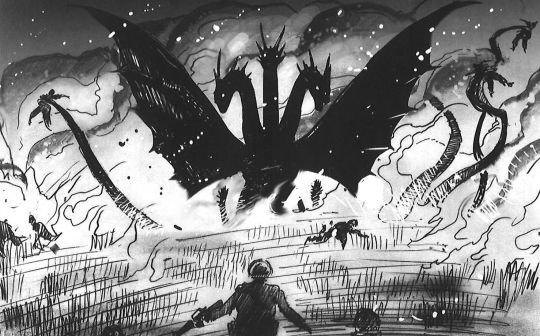
Clover Press shipped out copies of Godzilla & Kong: The Cinematic Storyboard Art of Richard Bennett to Kickstarter backers, myself included. It's an excellent art book, and there are plenty of deleted and altered scenes mixed in with more familiar sequences. Believe it or not, Bennett drew the panel above for Kong: Skull Island—they considered having James Conrad (Tom Hiddleston) flash back to an encounter with King Ghidorah in Vietnam. Not sure how that would've worked, as Ghidorah is generally not one to lie low for a few decades, but it's the first I've ever heard of it being considered. I'm hoping to post some more scans soon. Here's the order link.
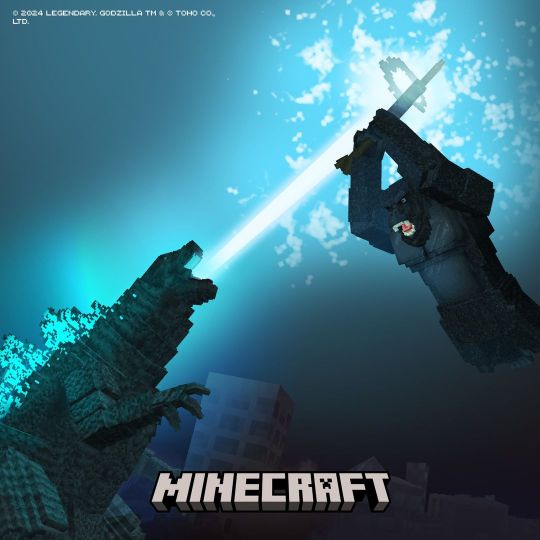
Minecraft social media accounts teased a crossover with the Monsterverse, in what's likely to be the most high-profile of the Godzilla x Kong video game collaborations. The Mobzilla mod was created over 10 years ago, so this is long overdue.

The big toy news this week was Titanic Creations revealing the digital sculpt for its Yongary figure. This guy's had even less figures than Gorgo - I can only think of one, and very few of them were made - so expect massive demand. New Godzilla toys were also on display at London Toy Fair, both at the Playmates booth and among the plushies made by an unknown company.
#kaiju week in review#godzilla minus one#godzilla#yongary#minecraft#king kong#kong skull island#king ghidorah#art#orochi#brush of the god#kaiju#tokusatsu#godzilla x kong the new empire
103 notes
·
View notes
Text

Death Becomes Her will be released on 4K Ultra HD + Blu-ray on October 22 via Scream Factory. The 1992 black comedy won the Academy Award for Best Visual Effects.
Robert Zemeckis (Back to the Future, Forest Gump) directs from a script by Martin Donovan (Apartment Zero) and David Koepp (Jurassic Park, Spider-Man). Meryl Streep, Bruce Willis, Goldie Hawn, and Isabella Rossellini.
Death Becomes Her has been newly transferred in 4K from the original 35mm camera negative with Dolby Vision. Special features are listed below.
Special features:
The Making of Death Becomes Her - Interviews with director Robert Zemeckis, writer David Koepp, director of photography Dean Cundey, production designer Rick Carter, and special effects artists Lance Anderson and David Anderson
Vintage making-of featurette
Theatrical trailer
Photo gallery
Two narcissistic archrivals (Meryl Streep and Goldie Hawn) discover the ultimate accessory – a potion that will keep them forever young – when they meet a mysterious enchantress (Isabella Rossellini) with deep ties to the Hollywood elite. But they get more than they bargain for when their newfound beauty only intensifies their vanity – and rivalry.
Pre-order Death Becomes Her.
#death becomes her#meryl streep#bruce willis#goldie hawn#isabella rossellini#scream factory#dvd#gift#robert zemeckis#martin donovan#david koepp#90s movies#90s comedy#1990s movies#sydney pollack
31 notes
·
View notes
Text
Oscars are tonight, and for whatever reason, I’ve actually watched all 50 nominated films this year. So. I just want to give some shout outs because contrary to popular belief, there were some excellent films this year. Focusing on films that I think have unfortunately not gotten the acclaim that they deserve - I do love some bigger ones (The Substance, Conclave, The Wild Robot, A Real Pain, just to name a few), but here are five nominees that I think should be bigger in our awards conversations.
Nickel Boys (directed by Ramell Ross) - this is my favorite film of 2024, and I genuinely believe it’s maybe the snub of the season that it wasn’t nominated for both Best Cinematography and Best Director. An extremely faithful adaptation of Colson Whitehead’s Pulitzer Prize-winning The Nickel Boys (which is also excellent), the film follows two teenage boys at a reform school in Florida in the 1960s. Inspired by horrifically real events, the film largely tells the story in first-person POV, which is something I’ve never seen done so effectively and emotionally before watching this movie. The visual language this film creates is stunning, and the performances were knockout. Highly, highly recommend that everyone check this out if they can; it’s extremely unlikely to win big at the ceremony tonight, but it’s one of the standout films of the year for me. My pick for Best Picture if I were an Academy voter.
I’m Still Here (directed by Walter Salles) - nominated for both Best Picture and Best International Feature Film (as well as an extremely deserved Best Actress nomination for Fernanda Torres), I’m Still Here follows the life of Eunice Paiva (Torres) and her family after the Brazilian military dictatorship disappeared her husband (former federal deputy Rubens Paiva) in the 1970s. While this film is firing on all cylinders (directing, cinematography, just everything truly), it hinges on Fernanda Torres’s performance, which for me is really a once in a lifetime thing to witness. Maybe that sounds hyperbolic, but I left the theater a shaking mess, and I’ve thought about her and this story almost every day since. Fingers crossed this at least wins Best International Feature Film, but I genuinely think this deserves every award it was nominated for and more. Putting it in this list because it’s honestly confusing to me that this hasn’t been the front runner all year long.
Sing Sing (directed by Greg Kwedar) - nominated for Best Actor (Colman Domingo), Best Adapted Screenplay, and Best Original Song (“Like a Bird”), this maybe doesn’t sound like a film that’s been overlooked by the Academy, but it unfortunately really has. The snub of Clarence Maclin not being nominated for Best Supporting Actor is something I think about watching every single awards show this year, and while I am rooting for Kieran Culkin still (with close seconds from both Guy Pierce and Jeremy Strong), it is difficult for me to take that category seriously without Maclin there. This film follows a theater group in Sing Sing prison and through incredibly powerful performances (most of which, outside of Colman Domingo, were delivered by actors who were or currently are part of the real life theater group that inspired this movie), the film explores the human need for art, expression, and connection within the lived reality of incarceration.
Better Man (directed by Michael Gracey) - y’all knew this was coming if you know me at all. It’s time to talk about the Robbie Williams musical biopic wherein Robbie Williams is played by a CGI monkey (aka a fantastic performance in motion capture by actor Jonno Davies). Now listen to me seriously: this is one of the best films of 2024. It’s nominated for one Oscar tonight (Best Visual Effects) and this is maybe the thing I’m rooting for the most for the whole night (other than Emilia Perez losing). It’s unlikely to happen, but man is it deserved. It’s amazing how much this movie actually wouldn’t work as well if Robbie Williams wasn’t a CGI monkey; it sounds like a weird gimmick, but it’s the linchpin of making this character and story work. As you can maybe tell, I’m USAmerican (sorry), so the only context I had for Robbie Williams before this movie was that episode of Derry Girls where they’re hitchhiking to Belfast to see Take That in concert, but you don’t need to know who Robbie Williams is for this film to work (though I now know there are plenty of Easter eggs for Robbie fans throughout the film; I’ve been won over!!). It’s an incredibly moving look at fame, addiction, mental illness, and loss; on top of all of that, it’s actually a great musical! Please watch this movie!
A Different Man (directed by Aaron Schimberg) - yes, we’ve had too many “Man” movies recently (the week’s difference between the rated-R horror film Wolf Man and the children’s animated film Dog Man in January being the most egregious), but don’t let that distract you from the excellence that is this movie. Part dark comedy, part horror, part…whatever this movie is, A Different Man follows aspiring actor (Sebastian Stan) who undergoes a radical medical procedure to change his appearance, only to descend into obsession and madness when he loses out on a once dream role to an actor with the same features he used to have (played by a phenomenal Adam Pearson). When I saw Sebastian Stan was nominated for Best Actor, I was pleasantly surprised until I realized he wasn’t nominated for this movie. Only nominated for Best Makeup and Hairstyling, A Different Man really is one of the movies that has stuck with me ever since I saw it at a screening back in September, and if nothing else, it’s also a fascinating counterpoint to The Substance that I think is necessary for both films.
Thank you for indulging me on five of my favorite but underrated Oscar nominees 💜 I’ll leave you with a rapid-fire of my top 20 of 2024 movies; some of these will make more sense than others, but the reality is that I watch a lot of movies (things Academy voters can never say lol) and I like a wide variety of movies. Anyways - if you love movies, strive to watch enough so you too can have a completely nonsensical list of favorites and fight with the Academy, too!
Nickel Boys
I’m Still Here
I Saw the TV Glow
The Fall Guy
The Substance
Thelma
Twisters
A Different Man
Challengers
Sing Sing
The Wild Robot
A Real Pain
Better Man
Hit Man
Dìdi
Conclave
Hard Truths
My Old Ass
La Chimera
The Seed of the Sacred Fig
#kt tangents#oscars#academy awards#do I respect the academy? not really. but man do I love movies#watching all 50 nominated films really was my own descent into madness though I can tell you that much#also if something isn’t in my top 20 it doesn’t mean I didn’t like it I watched around 125 2024 releases so. just. these are my favorite#im horrible at predicting awards so here! have this instead
12 notes
·
View notes